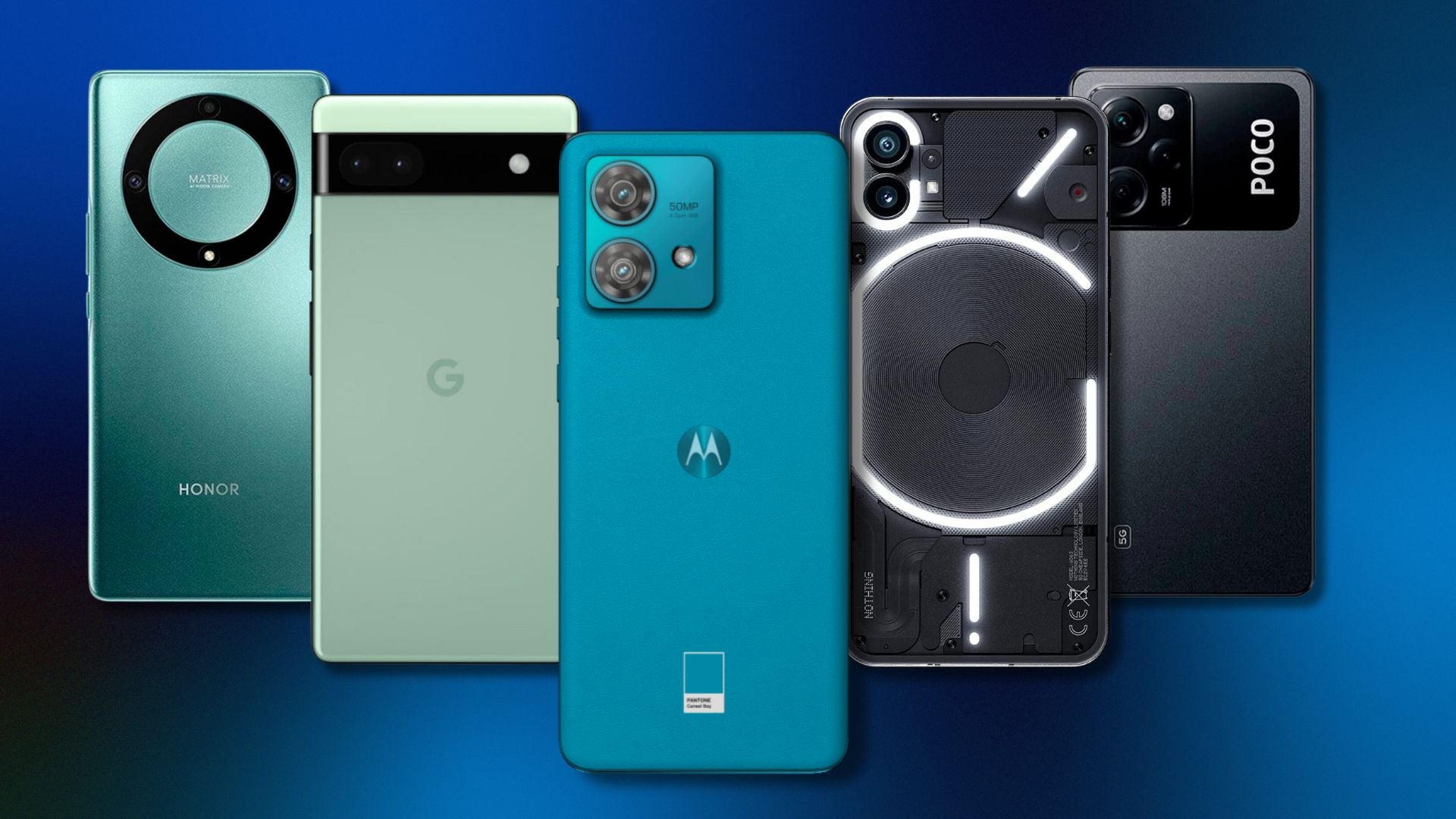On the hunt for a new phone in 2024 that doesn’t break the bank? You’re certainly not the only one. Flagship phones have made leaps forward in recent years, but the prices have risen alongside them.
10 years ago, a top-end smartphone may have only cost around £500/$500, but the world has changed significantly since then, and now you may well be charged double that if you go for a top-spec model.
But while the flagship market has gotten more expensive, the budget end of the market has vastly improved compared to a few years ago. Features that were considered exclusively high-end just a year or two ago have now made their grand arrival in the sub-$400/£400 section of the market, meaning that affordable phones are more tempting than ever.
Nowadays, if you know where to look, you can get greatly improved photography, robust construction quality, wireless charging and highly reliable performance on phones of this price. Of course, there are still plenty of devices that may let you down with sub-par battery life and bloated software, but none of those have made it to our prestigious list.
The aim of this guide is to help you steer clear of the array of underwhelming phones that promise too much and deliver too little and show you the real gems that offer fantastic value for money. All of the below devices have been physically tested by one of our reviewers to reliably gauge their performance in key areas, including camera performance, build quality and battery life, so you know that you can count on our buying advice.
Our definition of “affordable” means any handset retailing for less than £400/$400; however if we do happen to go over this amount, we’ll make our reasoning clear as to why we’ve made an exception.
We also have other best lists for those after something a little more specific. Our best camera phone round-up focuses on a device’s photographic and videography skills, while our best mid-range phone list focuses on slightly pricier devices.
Best cheap phones at a glance
How we test
Every phone we review goes through a series of uniform checks designed to gauge key things including build quality, screen accuracy, battery life, performance and camera prowess.
These include formal synthetic benchmarks and scripted tests, plus a series of real-world checks, such as how much battery it loses per hour streaming video.
We also make sure to use every phone we review as our primary handset for at least 4 days to ensure our review is as accurate as possible. You can see a more detailed breakdown of our testing methodology in our how we test phones guide.
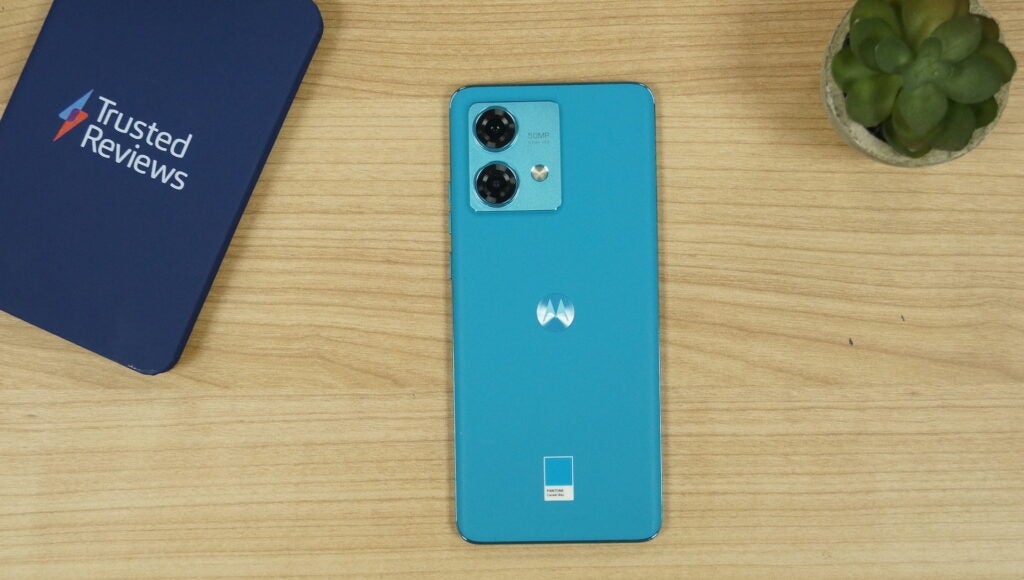
Motorola Edge 40 Neo
Best budget phone
Pros
- Thin, lightweight design
- All-day battery life
- Premium hardware despite the price
Cons
- Mushy, inaccurate vibration motor
- Some pre-installed bloatware
The Motorola Edge 40 Neo is not only an impressive all-rounder at a very tempting price of just £299, but it’s also one of the more compact budget options around in 2024.
It measures in at just 7.76mm thick and 172g, which makes it a delight to hold and use, and that’s further improved by IP68 dust and water resistance, a vegan leather finish and a slew of Pantone-certified finishes that make it stand out in a busy budget market.
The 6.5-inch screen isn’t to be sniffed at either, with a curved OLED panel delivering vibrant colours and deep blacks with great contrast. It can also reach a rapid 144Hz, beating the 120Hz panels of others in our list, allowing for a buttery-smooth experience that’s also well suited to gaming.
That’s backed up by a surprisingly capable camera system comprised of an OIS-enabled 50MP main snapper and a 13MP ultrawide on the rear, along with a 32MP selfie camera. The main sensor, in particular, is capable both in well-lit scenarios and low-light environments, bringing it close to what the Pixel 6a can achieve in a more attractive package.
Performance is also surprisingly good considering its budget price tag, with the Dimensity 7030 and ample 12GB of RAM able to compete with mid-range phones that cost £200 more. It’s still not powerful enough for high-end AAA gaming, but for all but dedicated mobile gamers, it should more than suffice.
And, despite its more compact dimensions than rivals, it still packs in a large 5000mAh battery that doesn’t struggle to last a full day without needing a top-up, though it can’t quite make it through a second day. The good news is that 68W fast charge tech can provide a 50% charge in just 17 minutes, among the fastest you’ll find at the budget end of the market.
So, if you’re looking for a solid all-rounder that doesn’t break the bank, look no further than the Motorola Edge 40 Neo.
Reviewer: Lewis Painter
Full review: Motorola Edge 40 Neo
Google Pixel 6a
Best budget camera
Pros
- Lovely small form-factor
- Reliable camera for the price
- Google’s excellent software
Cons
- 60Hz display feels slow compared to the rivals
- Slow to fully charge
It might’ve been replaced by the newer Pixel 7a, but that means the Pixel 6a is cheaper than ever, and rather impressively, still holds the title for best budget camera a year after use. Make no mistake, the Pixel 7a is a better phone with improved cameras, a faster processor and a 90Hz display, but doing so has raised its RRP past budget levels. Besides, at a discounted price, the Pixel 6a still offers incredibly good value for money.
You’ll find two very good snappers within the Pixel 6a, which are bolstered by handy tricks such as Magic Eraser and Night Sight in order to remove unwanted objects or improve your lowlight shooting, respectively. There’s a reason why Pixel phones are widely renowned for their camera tech, after all.
One area where the Pixel 6a really does excel over its affordable rivals is in the processor, which is the very same Tensor chip that you’ll find in the Pixel 6 Pro. It might not be an absolute beast in performance terms, nor even the latest Tensor chip, but it helps to deliver the great software, post-processing, 5G connectivity, and enhanced security that makes this phone a great all-round package.
Though the screen is colourful and punchy, it suffers a bit from not having a refresh rate enhanced beyond the standard 60Hz, so it may not seem as smooth as its competitors. Nonetheless, this device is well worth the price when all is taken into consideration.
Reviewer: Max Parker
Full review: Google Pixel 6a
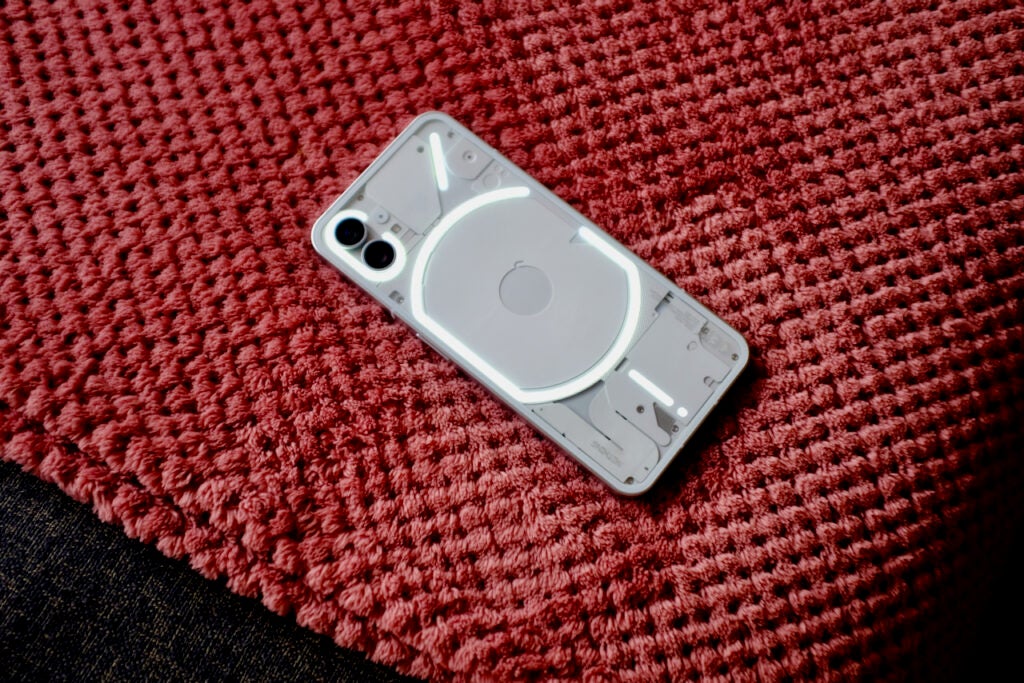
Nothing Phone (1)
Best-looking phone
Pros
- A design that stands out
- Really nice 120Hz OLED display
- Plenty of phone for the money
Cons
- Glyph Interface is more of a gimmick than a useful feature
- Odd performance issues, especally with the camera
Probably the most eye-catching handset on this list, the Nothing Phone (1)‘s look stands out from the crowd due to its transparent back covering and flashing LED arrangement, which indicates incoming notifications or the charging level in a unique way. Fortunately there’s far more to it than just this quirk.
We particularly liked the lush 120Hz display, which is one of the best around at this price point. With HDR support and high levels of brightness, this screen is a joy to use for gaming and more. There are two rear cameras on board, wide and ultrawide, and they both do a pretty good job. Although some snaps can end up looking over-exposed, most of the photos that we took in complimentary lighting conditions turned out very well, while its night shooting was a particular highlight.
The 4500mAh battery was plenty big enough to get us through the day, and it’s great to see the wireless charging feature at this price point as well. However, one of the few negatives about this handset was performance issues, likely down to sub-par software optimisation, which caused some stuttering from time to time.
The newer Nothing Phone (2) may take the experience up a notch with a flagship-level Snapdragon 8 Plus Gen 1 processor, improved cameras and better Glyph lighting, but the price has also gone up by quite a bit as a result. With Nothing leaving the Nothing Phone (1) on sale at its much cheaper price tag, it remains a tempting option for design-focused consumers a year after its initial release.
Reviewer: Max Parker
Full review: Nothing Phone 1

Honor Magic 6 Lite
Best build quality
Pros
- Loverly premium design
- Brilliant display with 1920Hz PWM dimming
- Long battery life
Cons
- Slower charging than the Magic 5 Lite
- Video stabilisation is awful
- Ships with Android 13, rather than 14
If you’re looking for a reasonably priced smartphone that’s packed full of features, has a sleek design and is robust enough to survive a few drops and spills, then the Magic 6 Lite is the perfect smartphone for you.
The Magic 6 Lite looks much more high-end than its price reflects. Thanks to its curved sides, polished finish and minimal camera bump, you’ll barely notice the phone in your pocket, which is quite a change from chunkier smartphones on the market.
The Magic 6 Lite has features an IP53 rating for dust and water resistance, which wasn’t found on its predecessor. Although this doesn’t mean the phone is totally waterproof, it’s robust enough that the odd spill or rain shower shouldn’t cause any problems with the handset.
The Magic 6 Lite runs on Snapdragon 6 Gen 1, which isn’t the most recent version of Qualcomm’s chipsets, but it’s still a decent platform and is an upgrade from its predecessor. In our review, we concluded that you’d be hard-pressed to tell the difference between the Magic 6 Lite and a higher-end flagship model, as apps always opened quickly, animations were smooth and multitasking was seamless.
The handset also comes with 256GB of storage and 8GB of RAM, which is still pretty rare for a smartphone of this price range.
Housing a mammoth 5300mAh battery, it’s unsurprising that Honor states it can provide over two days on a single charge, which our reviewer found to be the case. In our benchmark tests, we found 60-minutes of Netflix drained the Magic 6 Lite’s battery by just 4%, compared to similar phones, like the Motorola Edge 40 Neo, where a higher 11% battery discharge was seen.
The Magic 6 Lite also allows for up to 35W fast charging, and although this isn’t the fastest, our benchmark tests found that 15-minute charge topped the battery by 18%. Of course, there’s faster charging on higher-end smartphones, but this still beats the likes of the Google Pixel 7a.
Reviewer: Luke Baker
Full review: Honor Magic 6 Lite
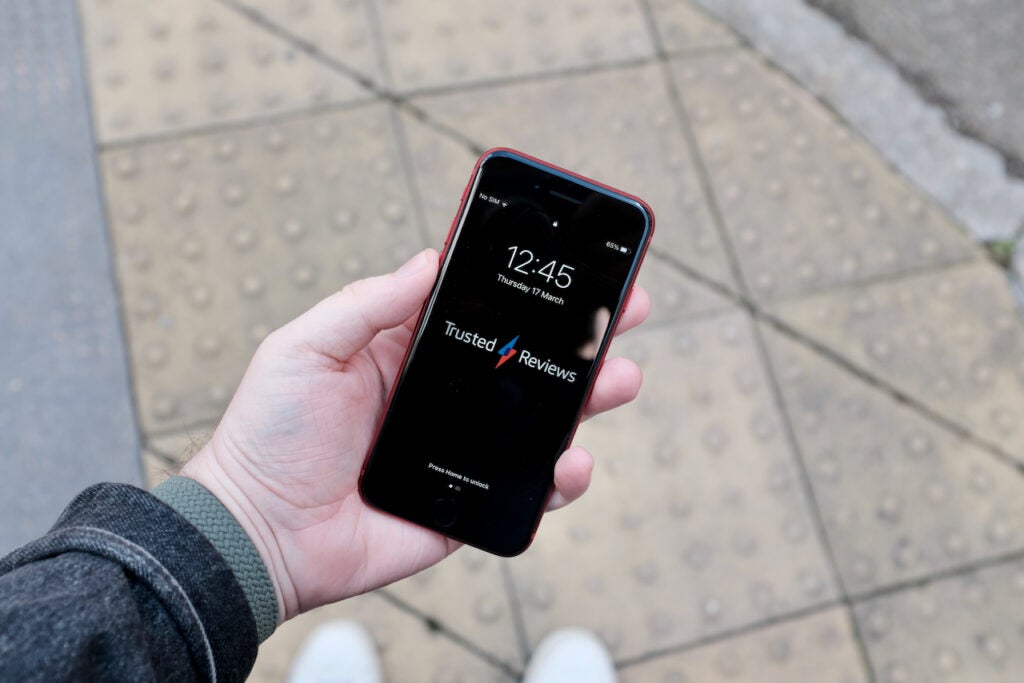
iPhone SE 2022
Best for Apple fans on a budget
Pros
- The fastest phone at this price (by some distance)
- Takes great daylight pictures
- IP rating and wireless charging
- iOS and all the benefits that come with it
Cons
- Small screen is cramped and restrictive
- Tired design
- No night mode in the camera
We are bending our rules slightly to include a phone that breaks our price limit, but if you’re deadset on getting yourself a new iPhone, then this is your cheapest option – and it’s still a belter.
You may have to forgive the depressingly dated design and its associated small screen which measures just 4.7 inches, but if you can get over that then the iPhone SE 2022 does in fact still offer a lot of positives for the price.
First and foremost, it runs on the brilliant A15 Bionic chip, which is one of the very best in the business; it’s actually the very same one that you’ll find on the iPhone 13 Pro, so you won’t be wanting for power. Even better, this phone will be in line for Apple’s unparalleled long-term software support, so we wouldn’t even be surprised to see it getting the latest updates seven years from now.
On top of that, the newest iPhone SE has one of the best cameras that you’ll find for the price, and it particularly delivers on richly detailed images, so that difficult textures like dog fur or woolly jumpers look especially good. That said, it does miss out on a dedicated Night Mode, which is a real shame, so if you’re planning to take a lot of pictures when the sun is down then this might not be the best phone for you. The selfie camera also could do with some work, with it not being to the same standard as the main snapper.
If you’re looking for an iPhone that gives a good camera and strong performance for a cheaper entry price then this is a good bet, but do bear in mind that the screen is small and underwhelming.
Reviewer: Max Parker
Full review: iPhone SE 2022
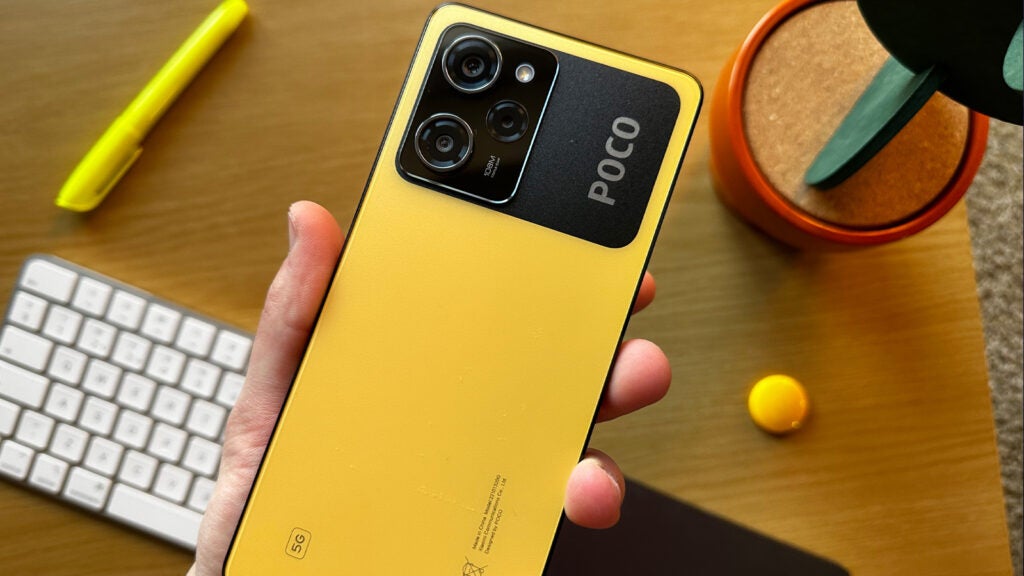
Poco X5 Pro
Best for a value big screen
Pros
- Fully-capable 6.7-inch OLED display
- Surprisingly well-equipped camera
- Decent performance
Cons
- Cheap rear design
- MIUI software is very cluttered
- Unfriendly amount of bloatware
The Poco X5 Pro 5G, while not hugely different from its predecessor, is a great-value handset with great features across the board, so it’s well worth your consideration if you’re hunting for a handset that’s below $400/£400.
The OLED screen measures a generous 6.67 inches with a 1080p resolution, along with more premium features including a 120Hz refresh rate and support for HDR10+, which is brilliant for the price. It’s not auto-adaptive like premium alternatives, but if you’re prepared to adjust it yourself, you’ll find that supported content is smoother than ever.
Its main 108-megapixel camera is also worth shouting about, as it delivers excellent pictures that are bound to impress for the price. Night Mode does a good job of cleaning up any noise that you might get, however the accompanying ultrawide and macro lens aren’t up to this same standard.
Performance is fine but not exceptional with a Snapdragon 778G at its heart, but it does offer 5G connectivity for the latest mobile data speeds. The battery life is brilliant with a 5000mAh cell, and we reckon that you could even squeeze two days’ life out of it if you use your phone with some restraint.
There aren’t many downsides here, but one would have to be the cheap rear design and feel, and the other would be its bloatware-stuffed software interface. MIUI is far from ideal for day-to-day use.
Reviewer: Connor Jewiss
Full review: Poco X5 Pro 5G
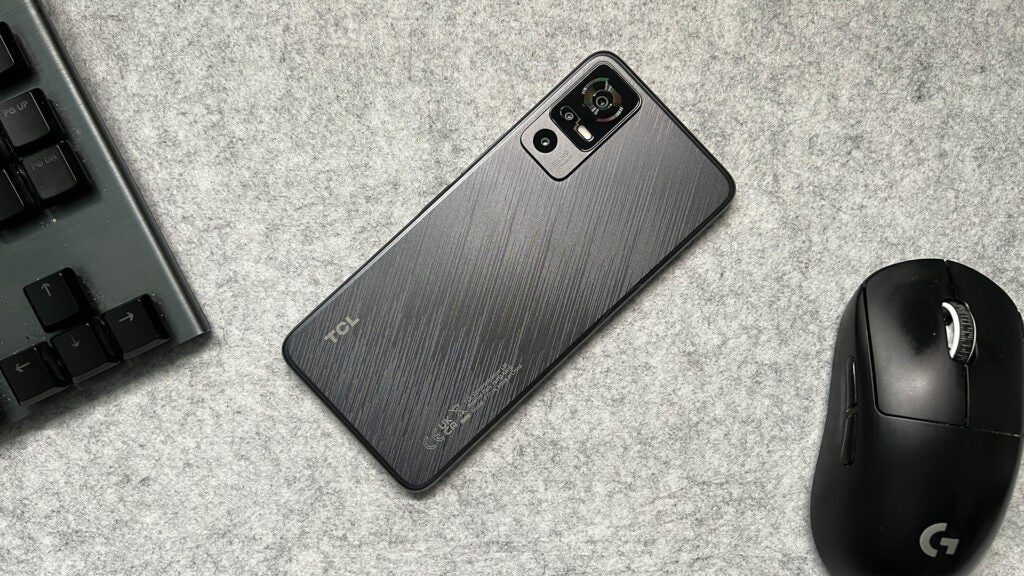
TCL 40R 5G
Best entry-level phone
Pros
- An eye-catching design
- All-day battery life
- Just about powerful enough to game on
Cons
- 720p resolution
- 2MP macro lens isn’t great
- Plenty of pre-installed bloatware
What if you want a decent entry-level phone for less than £200 that simply does the job? The TCL 40R 5G fits the bill.
The budget-focused device offers all the main staples of a solid budget smartphone experience with 5G connectivity, a good-looking design, long battery life from a 5,000mAh cell and decent (though not quite snappy) everyday performance.
There’s a large 6.6-inch LCD display with a 90Hz refresh rate great for scrolling and binging, though its sub-1080p resolution can make elements look a little soft. The main 50MP rear camera is capable of delivering surprisingly sharp images for the price, at least.
It might not be able to compete with more premium options on the market, but for the £199 price tag, you won’t find much better in 2024.
Reviewer: Lloyd Coombes
Full review: TCL 40R 5G
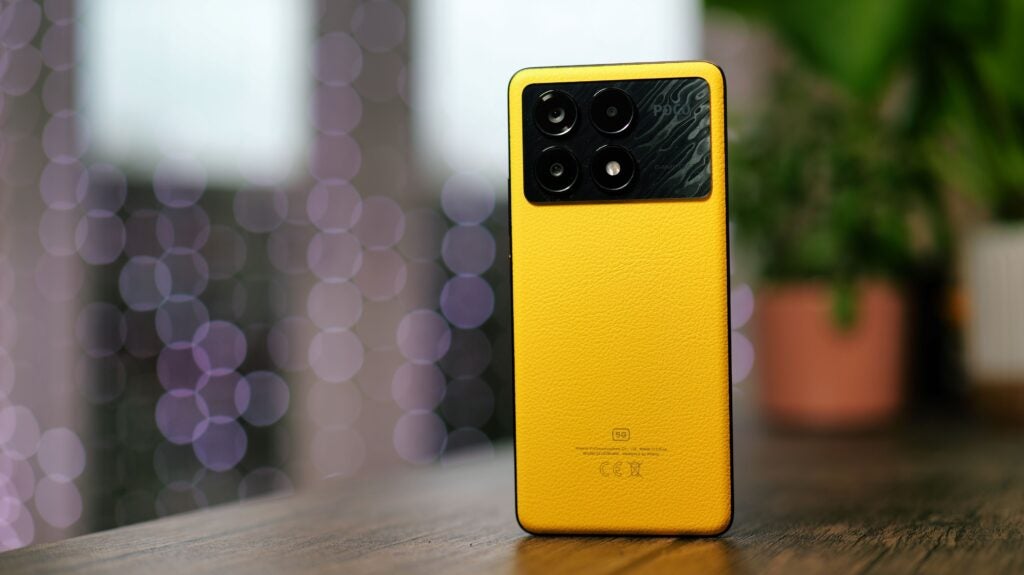
Poco X6 Pro
Best budget gaming phone
Pros
- Powerful MediaTek processor
- Bright 120Hz OLED display
- Great main and selfie cameras
Cons
- Bloatware
- Advertisements in some system apps
- Weak ultrawide and macro cameras
The Poco X6 Pro delivers a true flagship smartphone experience at a fraction of the usual flagship cost.
Thanks to its adaptable refresh rate of between 60-120Hz and its 480Hz touch sampling rate, the Poco X6 Pro is an ideal smartphone for gaming. In fact, the touch sampling rate can even be boosted to an impressive 2160HZ, using the phone’s built-in Game Turbo mode.
Despite its RRP being just £369, the Poco X6 Pro is powered by the mighty MediaTek Dimensity 8300-Ultra chip, which is a premium processor. Although not the highest-end chip offered by MediaTek, the 8300-Ultra still allows for powerful performance and, when compared to similarly priced rivals, the X6 Pro’s performance is a clear winner.
The X6 Pro is also one of the first phones that have shipped with Xiamoi’s new operating system, but if you’ve recently used a Xiaomi or Poco device then you shouldn’t expect too much of a change.
Boasting a 5000mAh battery, the X6 Pro doesn’t drain the battery too easily. Our benchmark tests showed that 60-minutes of Netflix resulted in 8% battery drain, compared to Motorola Edge 40 Neo’s 11% drain.
The X6 Pro is also fast-charge capable, up to an impressive 67W. Our benchmark tests showed that a 30-minute quick charge can get you up to 78%, which is ideal for a quick top-up in between gaming.
Reviewer: Luke Baker
Full review: Poco X6 Pro
FAQs
Our favourite cheap phone for the camera is the Pixel 6a, though the Motorola Edge 40 Neo isn’t too far behind.
Yes, all of the phones in the above list offer 5G connectivity so you’ll be able to get these data speeds as long as you have network coverage and a compatible SIM card.
Comparison Specifications
UK RRP
USA RRP
EU RRP
CA RRP
AUD RRP
Manufacturer
Screen Size
Storage Capacity
Rear Camera
Front Camera
Video Recording
IP rating
Battery
Wireless charging
Fast Charging
Size (Dimensions)
Weight
ASIN
Operating System
Release Date
First Reviewed Date
Resolution
HDR
Refresh Rate
Ports
Chipset
RAM
Colours
Stated Power
Trusted Reviews test data
Geekbench 5 single core
Geekbench 5 multi core
Geekbench 6 single core
Geekbench 6 multi core
sRGB
Adobe RGB
DCI-P3
Max brightness
1 hour video playback (Netflix, HDR)
30 minute gaming (intensive)
30 minute gaming (light)
1 hour music streaming (online)
1 hour music streaming (offline)
Time from 0-100% charge
Time from 0-50% charge
30-min recharge (included charger)
15-min recharge (included charger)
3D Mark – Wild Life
GFXBench – Aztec Ruins
GFXBench – Car Chase

